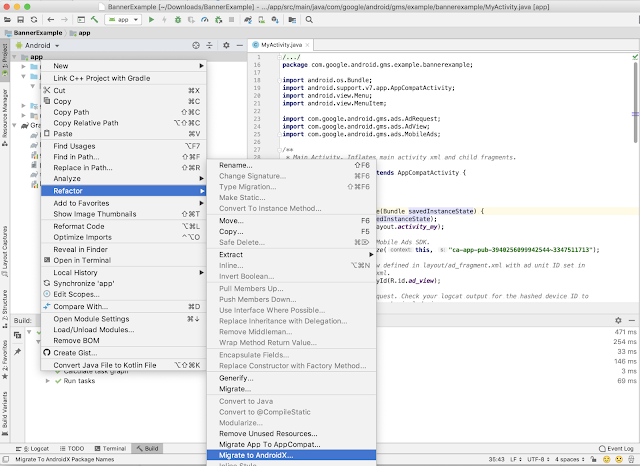People are spending more time on their mobile phones, especially in apps, and move across screens frequently. As people’s usage of mobile apps has grown, so has the importance of standardizing the way viewability is measured on mobile devices.
Today we’re sharing how we’ve made in-app inventory more measurable through the IAB Tech Lab’s Open Measurement standard. Integrating the Open Measurement Software Development Kit (SDK) into both our Google Mobile Ads (GMA) and Interactive Mobile Ads (IMA) SDKs has allowed us to enable Open Measurement on 85+ percent of in-app display and video impressions on Google AdMob and Google Ad Manager publishers. This means that buyers of this inventory can now take viewability measurements using solutions like Integral Ad Science, DoubleVerify, Comscore, and Moat in addition to measurement that was previously available with Active View.
“IAB Tech Lab’s Open Measurement (OM) initiative makes it easier for ad buyers and sellers to work together for viewability measurement and other verification needs,” said Dennis Buchheim, Executive Vice President and General Manager, IAB Tech Lab. “The sell-side has been adopting OM quickly, and we ask brands, agencies, and Demand Side Platforms (DSPs) to get more active and take advantage of what OM offers.”
Advertisers can get started today by appending Open Measurement enabled tags from their viewability vendor of choice to their creatives.
Measurement vendors are lauding this development as progress for a more measurable future. Joseph Ranzenbach, Director of Product Management, IAS says, "Google's adoption of the Open Measurement SDK is a huge step in moving the industry forward and creating more transparency for advertisers." Sumit Shukla, SVP, Strategic Partnerships, Comscore says, "It’s important for Brands to consistently measure viewability across the entirety of their media buys. With Comscore’s cross-platform campaign measurement as a trusted market currency, this close partnership with Google further helps Brands measure what matters."
Viewability measurement unlocks high-performing In-app inventory for advertisers
Viewability continues to be an integral part of measuring ad effectiveness—it helps advertisers understand if their ad had the opportunity to be seen and it helps publishers offer more high-quality inventory.
In-app viewability means that advertisers can confidently take advantage of this high-value inventory. In 2018 we worked with Ipsos MORI to understand the impact of in-app advertising and found it was successful in driving action. People were 50 percent more likely to interact with a brand, buy a product or service, follow a call-to-action or recommend a brand to their family or friends after seeing its ad in an app, compared with those who saw it via a browser. Display & Video 360 customers can now confidently extend their brand campaigns to apps knowing they are able to measure ad viewability at the impression level as they would in other environments.
Publishers like Pandora recognize the importance of holistic viewability measurement. Maria Breza, VP, Ad Quality Measurement and Audience Data Operations at Pandora said, “Advertisers should be able to seamlessly use one viewability provider to measure their buys across all publishers and platforms. Open Measurement has allowed Pandora to make this a reality for our clients with less latency, less maintenance and more stability.”
What’s next for Open Measurement
We’re continuing to work with the IAB’s Tech Lab Open Measurement Working Group to expand Open Measurement to use cases beyond viewability, as well as to other environments such as web video. We believe Open Measurement has the potential to create a more transparent and accountable digital media ecosystem across all screens. Reach out to your measurement partners and Google representative to find out how you can take advantage of this new measurement technology.









